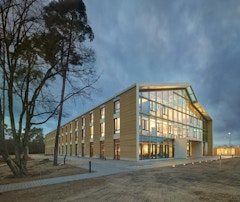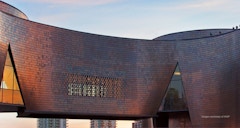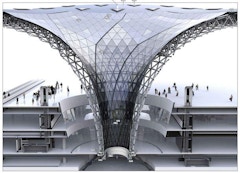57 results
-
Integrated management of commercial lighting, heating, ventilation and air conditioning systems is considered as one of the most promising building…
-

Exploring Heritage: Building on the Past
- Article by Mic Patterson
Welcome to this edition of the SKINS newsletter, which is all about carbon! As guest editor this month, I am representing FTI’s embodied carbon (EC) working group. This issue highlights several important topics relative to embodied and the trade-offs with operational carbon.
-

The Monash Woodside Building
- Paper by Alberto Sangiorgio, Principal Façade Engineer Andrew Cortese, Managing Partner and Design Director - Sydney Office Walter van der Linde, Lead Engineer, Buildings Mechanical
Today’s environmental challenges highlight the necessity of a holistic approach to façade design and construction, key to achieve the ambitious 2030… -

Embodied Carbon Of Timber Unitized Curtain Wall
- Paper by Isabelle Hens, LEED AP BD+C, WELL AP, EIT, Environmental Designer Sophie Pennetier, Associate Director - Special Projects Simon Schleicher, Associate Professor
The building envelope is at the intersection of embodied and operational emissions. Curtain wall specifically could play an important role in… -
Form as Energy
- Paper by Matthew Fineout
All too often, high-performance building envelopes are considered in terms of new materials and technologies that push specific systems to improve
-

Facade Resilience Evaluation Framework
- Paper by Fabio Favoino, Department of energy Adèle Chalumeau, Facade engineer Audrey Aquaronne, Facade engineer
Resiliency is the capacity of a building (or building component in the case of the facade) to support building functionalities during extreme events… -
Glass in GSA Buildings
- Paper by Georgia Scalfano
Embodied carbon in buildings is a key factor in building decarbonization and while it is generally small compared to operational carbon, the
-

Window in Wall: Back to the Future
- Paper by Thomas Auer · Ata Chokhachian
In order to get to a carbon neutral building stock – which is e.g. required by the EU Carbon roadmap by 2050 – our efforts need to be smart and
-
Facade Embodied Carbon Reduction Strategies
- Paper by Isabelle Hens, LEED AP BD+C, WELL AP, Senior Environmental Designer
Facades are increasingly being recognized as a major contributor to whole-building embodied carbon. While designers know how to reduce the embodied… -

End-of-Life Challenges in Facade Design
- Paper by Rebecca Hartwell · Mauro Overend
In recent decades, there has been increased attention to reduce the operational energy performance of buildings. Stringent legislation on building
-

Envelope For Service
- Paper by Annalisa Andaloro · Miren Juaristi · Stefano Avesani · Giulia Santoro · Matteo Orlandi
Envelope-for-Service (E4S) is a novel business model developed with the aim of converting the building façade from a traditionally traded good to a
-

FTI forward: Student forum on facades carbon
- Event by Facade Tectonics Institute
Our upcoming FTI Student Forum explores the intersection of Facades, Carbon, and Circularity. In a fast paced spitfire format, architecture students present their recent work and research.
-

Innovative Façades for a Sustainable Architecture
- Paper by Lucio Blandini,
Facades play a relevant role in the search for a more sustainable approach to modern architecture. The amount of embodied and operational energy can… -
Shaping Skin
- Paper by John Neary AIA LEED AP NCARB
The conventional modern facade is essentially flat, which creates the tendency toward visual monotony and problems for modulating daylight—both on
-

Transformation as Movement
- Paper by Vytenis Gureckas,
In 1888 the art historian Heinrich Wölfflin proposed the notion that the primary characteristic of baroque architecture is the illusion of movement.… -

-

-
Spandrel Thermal Simulation Techniques
- Paper by Ivan Lee, Building Science Consultant Edlyn Garcia La Torre, Facade Consulant Shahima Rahmatipour, Building Science Consultant
Glazed wall systems, such as curtain walls and window walls, are one of the most commonly used façade systems in modern buildings in North America.… -

Facade Tectonics Forum: Simulation vs. Reality
- Event by Facade Tectonics Institute
The gap between simulated and actual energy performance has hobbled progress towards important carbon reduction goals in buildings and urban habitat. This summit advocates the need for improved energy modeling and the development of best practices, with emphasis on the building façade.
-

The Performative Double-Skin
- Paper by Jeffrey Abramson, AIA, LEED AP, Associate Principal Alejandra Menchaca, PhD, LEED AP, WELL AP, Vice President
Double-Skin Facades (DSF) are well-known to boost the thermal performance of a façade: they can provide extra insulation in the wintertime and lower…

